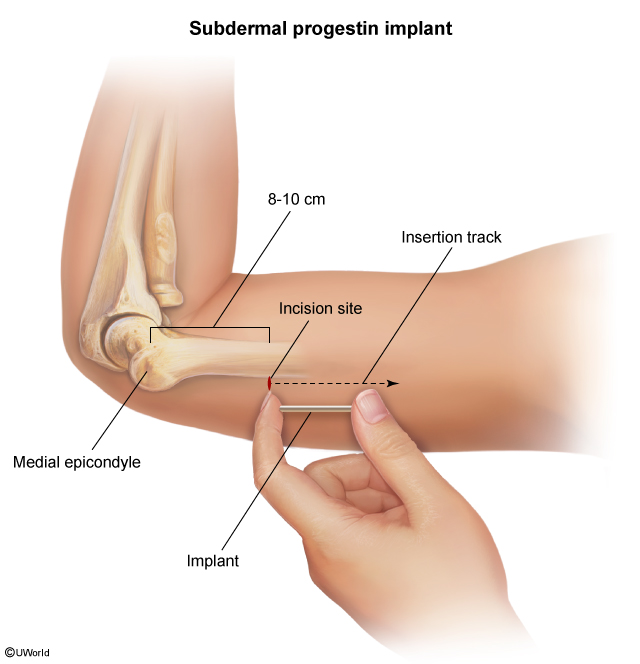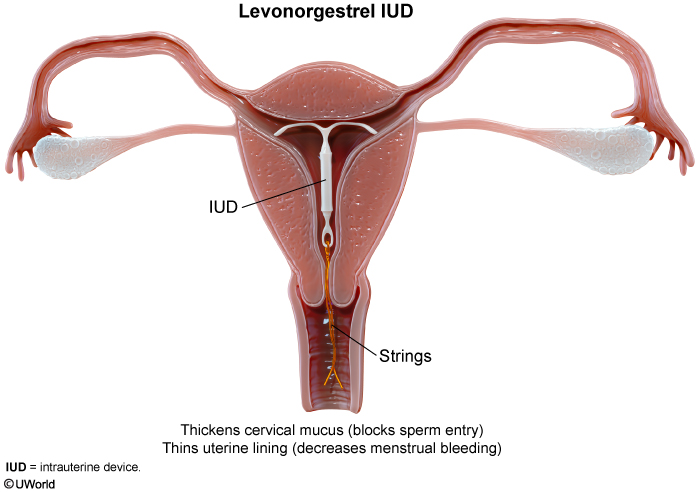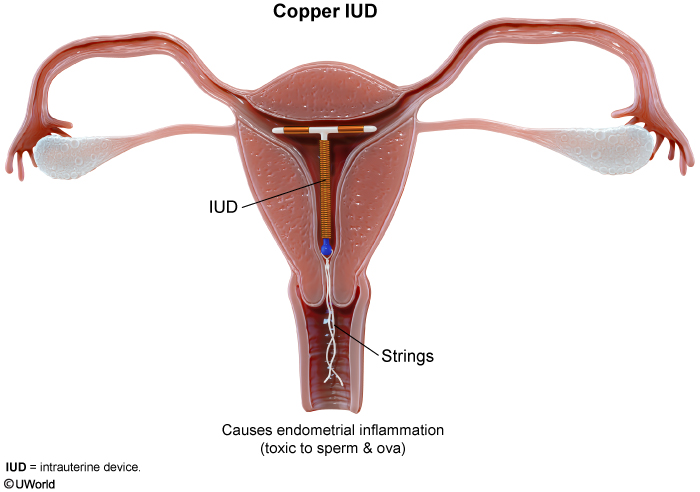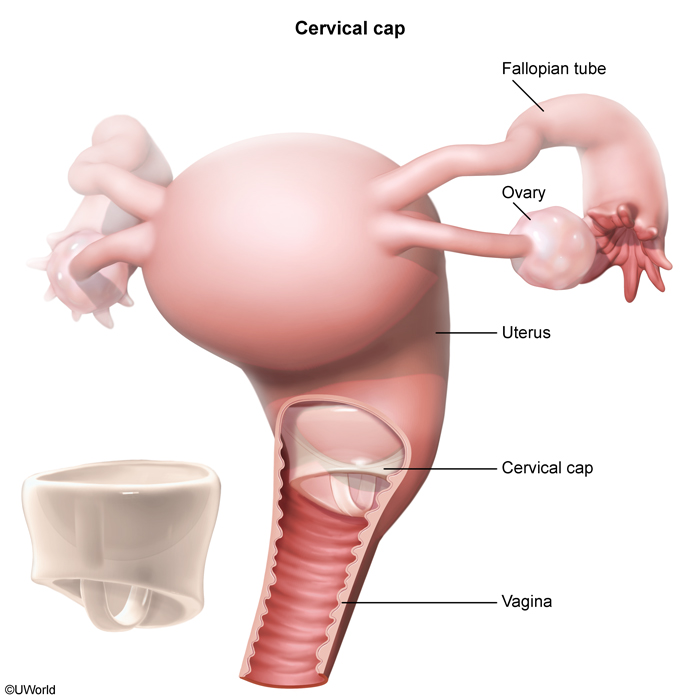Contraception
Article Sections
- Introduction
- Combined estrogen/progestin oral contraceptive pills (OCPs)
- Progesterone-only contraceptive pills
- Depot medroxyprogesterone acetate intramuscular injection
- Progestin-releasing subdermal implant
- Intrauterine devices
- Barrier contraception: condoms, cervical cap, and diaphragm
- Permanent contraception: bilateral tubal ligation and vasectomy
Introduction
Contraceptive counseling should be patient-centered and take into consideration patient-specific factors (eg, medical history), the risk/benefit profiles of various contraception methods, and the patient's future fertility desires.
Combined estrogen/progestin oral contraceptive pills (OCPs)
OCPs prevent pregnancy through several mechanisms:
- Ovulation inhibition (primary mechanism of contraception): The constantly elevated systemic levels of estrogen exert negative feedback on both the hypothalamus and anterior pituitary, which inhibits the release of gonadotropins (LH, FSH). This suppression prevents the midcycle LH surge required for ovulation.
- Cervical mucus thickening: due to the progestin component; the increased cervical mucus viscosity prevents sperm passage.
- Endometrial changes: The progestin component thins the endometrial lining, making it less suitable for implantation (this mechanism is also utilized for the management of patients with heavy menses).
Continue Learning with UWorld
Get the full Contraception article plus rich visuals, real-world cases, and in-depth insights from medical experts, all available through the UWorld Medical Library.
Figures

Figure 1

Figure 2

Figure 3

Figure 4
Tables
Table 1
Table 2